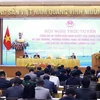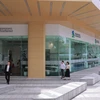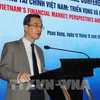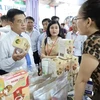Deputy Prime Minister Vu Van Ninh has asked the Ministry of Finance to publicise the management and use of the fuel price stabilisation fund every quarter on the Ministry’s website.
This was to enhance the transparency of the fund as well as providing official information to relevant organisations and residents.
Deputy Director of the Price Management Department Nguyen Anh Tuan said that the fund was under the management of the Ministry of Industry and Trade, not the petrol enterprises.
The Ministry of Industry and Trade said that Circular 84/2009/ND-CP regarding petrol businesses will be amended and submitted to the Government before the end of June.
The fuel price stabilsiation fund was founded based on Circular 84, under which wholesale petrol enterprises must set aside funds to stabilise prices.
Petrol prices were cut three times last month by a total of 1,200 VND (0.057 USD) per litre after an increase of 1,400 VND (0.067 USD) to a record high of 24,550 VND (1.17 USD) per litre at the end of March.-VNA
This was to enhance the transparency of the fund as well as providing official information to relevant organisations and residents.
Deputy Director of the Price Management Department Nguyen Anh Tuan said that the fund was under the management of the Ministry of Industry and Trade, not the petrol enterprises.
The Ministry of Industry and Trade said that Circular 84/2009/ND-CP regarding petrol businesses will be amended and submitted to the Government before the end of June.
The fuel price stabilsiation fund was founded based on Circular 84, under which wholesale petrol enterprises must set aside funds to stabilise prices.
Petrol prices were cut three times last month by a total of 1,200 VND (0.057 USD) per litre after an increase of 1,400 VND (0.067 USD) to a record high of 24,550 VND (1.17 USD) per litre at the end of March.-VNA



















